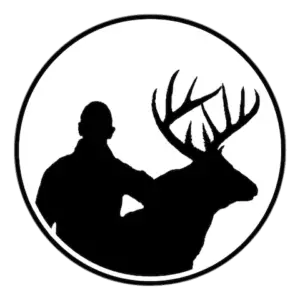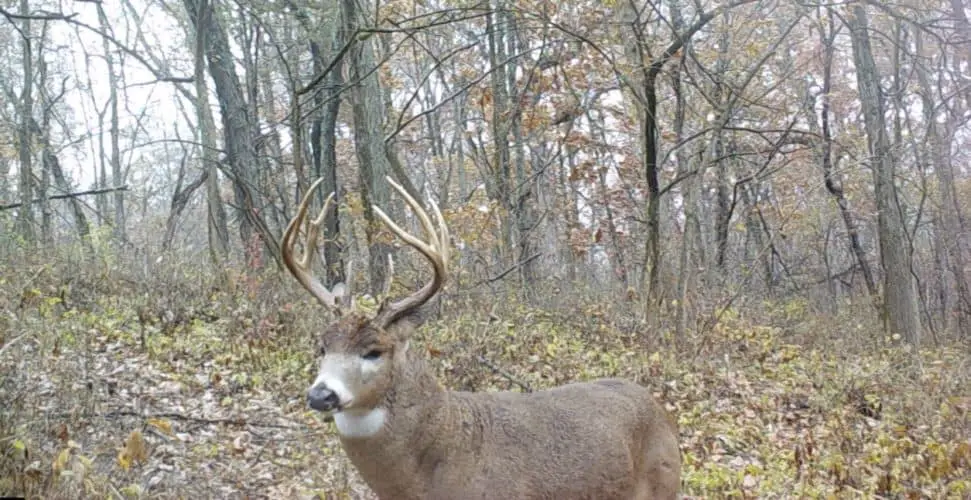Hunters that kill big bucks on a consistent basis have a few traits in common. One of these common traits is focusing on the tiny details, which ultimately stack up and tilt the odds of success in the hunters favor. When you hang your tree stand, there are several considerations to keep in mind. Here are 52 tips to consider when hanging a tree stand.
1. Scouting
Scouting is critical for putting your tree stand in the right location. Every location has its own unique recipe for producing the best odds of killing a target buck, or deer in general. Find the bedding areas, food sources, transition zones, water sources, and so on to determine where the best spots are.
Use aerial maps to quickly locate habitat changes. Deer love edge habitat. If you find an area where several habitat areas come together in one spot, it might just be the perfect stand location.
2. Keep an Eye on the Bigger Picture
Whether you hunt a small property or large parcel you should try to learn everything you can about the surrounding area. This will help you understand how deer might be using the area and guide you to help find the best spots to hang your tree stand. Try to locate the resource that is the highest in demand at a specific point of time during the season.
Stand sites will peak in attraction at different times during the hunting season. This could be a late season food source when all other food sources are scarce or possibly a bedding area with great thermal cover to keep deer warm during the winter. Also, don’t overlook fruit trees like persimmon or apple trees dropping fruit throughout the months of October through December.
3. Topography
When looking at the big picture to find the best spots for hanging a tree stand, don’t just rely on an aerial map. Knowing the lay of the land also means understanding elevation changes. This is one of the best ways to identify those outstanding funnels and pinch point stand locations.
Elevation changes can be understood by looking at the contour lines on a topographical map. The closer the lines are to each other the steeper the topography change will be. This will help you understand where high deer traffic areas will be as well as your best entry and exit routes for hanging and hunting your tree stand.
4. Wind Direction
Anytime you are in a deer’s habitat you need to prevent your wind from blowing to where deer are expected to be. They can smell you much further than you can shoot a bow or gun. If a mature deer catches a whiff of your scent the odds of getting a shot opportunity on that deer are very low. Educating deer of your presence will also make them more alert around your hunting spot which will make future hunts there more difficult. Deer use their nose like humans use their eyes. From the moment you arrive to an area where you plan to hunt, be thinking about how the deer are impacted by you being there. Where do you park your truck? How do you enter and exit your stand location? Do you think the deer you are hunting can smell you at any point from the time you arrive to the property?
5. Entry/Exit
Many of the most successful big buck hunter’s have one thing in common when choosing a tree stand location. They ask themselves if they will be able to get in and out of their hunting location without educating deer.
Your entry and exit is more important than the spot where your tree stand is hanging. An amazing spot will quickly become a horrible spot if deer can hear, see, or smell you while entering or exiting your tree stand location. This includes when your hunt is over. Deer can smell your scent several hours after you leave your tree stand, so try to access your stand through areas were deer are least likely to visit.
One of my favorite entry and exit strategies is walking through a shallow stream or drainage ditch. This a usually a good strategy because deer don’t spend a lot of time in ditches and sometimes there is shallow water to walk through which will help prevent any ground scent from getting left behind to avoid alerting the deer to hunting pressure. If you don’t have natural features like ditches or other topography changes to help you get in and out of your tree stand then create them yourself. For example, you might be able to plant cedar trees or miscanthus giganteus on the edge of your property to block a deers vision to your entry/exit. You could even cut trees along a wood edge to make a wall of thick cover that would be hard to see through. Lastly you could use a bulldozer to create a long berm of dirt to hind your access.
6. Transition Zones
A great place for hanging a tree stand is in transition zones. These are places where deer don’t spend a lot of time, unlike bedding areas or a destination food source. Transition zones could be a kill plot or small food plot, especially if planted in a long strip about 20 yards wide by 50 yards long or longer.
Transition zones help you get in an out of your tree stand undetected because deer aren’t likely to be hanging out there. Transition zones are great rut locations for those all day sits when any deer can walk by at any time.
7. Funnels
Funnels are great places for killing bucks during the rut. Regardless of what you see on TV, most giant bucks are killed in security cover and not in a food plot. Some of the best funnels typically provide cover of some kind to make those older bucks more comfortable to move through them.
You don’t have to wait for the rut to hunt a funnel. Find a funnel between a food source and a bedding area and you have a great all season spot that you can hunt with confidence. But don’t forget about your entry and exit. If that’s not bulletproof then you might be better off not hunting that spot and saving it for the rut.
8. A live Tree
Hang your tree stand in a tree that is living and not dead. Dead trees eventually fall to the ground a pose a risk to your safety. Inspect the tree to make sure poison ivy isn’t growing up the trunk before jumping right onto the tree to hang your stand. Hunters make these simple mistakes every year, so take a little bit of time to observe the tree you are about to hang in before climbing on up.
9. Tree Width
The width of the tree will ideally be the width of your shoulders or larger. This will help conceal the outline of your body, making it difficult for deer to recognize you in the tree. A wide tree will also prevent you from swaying too much on a windy day, which will offer more stability when take a shot at a deer. Not swaying back and forth will make the sit more comfortable also.
10. A Straight Tree
Choosing to hang your tree stand in a tree with a straight trunk will make your stand safer and easier to climb into as opposed to a tree with a crooked trunk.
Many tree stands and climbing sticks make it difficult to hang in crooked tree anyways. If your only option is to hang in a crooked tree then make sure you utilize the right climbing steps and tree stand to make it as safe and comfortable as possible.
11. Back Cover
Stand on the ground in specific spots where you expect deer to walk by your stand and look up at the spot on the tree where you plan to hang your tree stand. How does the back cover look? Back cover in a tree stand is typically other trees or maybe a hillside. Good back cover, as opposed to wide-open sky, will help hide you and your movements in the tree stand and keep you concealed.
12. Front Cover
Sometimes it seems impossible for you to not be picked off by deer because every tree around you is small in diameter and they all look the same. Front cover is one of the best ways to hide from deer.
Many ladder stand hunters wrap a camouflage curtain around the stand platform to help them stay hidden from the deer. The deer will get used to the curtain while you aren’t hunting there and when you slip in behind that curtain to hunt, they don’t know the difference (As long as they don’t smell, see, or hear you move).
If you are hanging a hang-on tree stand you can create front cover by cutting tree branches and weaving them through the platform of your stand. Angle them up at a 45 degree angle and use tie wire to help keep them in place during those windy days.
When you cut branches try to pick a tree species that will hold its leaves after it dies. Oaks are typically great trees for holding their leaves long after a branch is cut.
13. Hide your Ladder
Concealing the ladder on your ladder stand or climbing sticks is another good strategy for not only hiding your stand from the deer but from other hunters. When you hide straight objects like a ladder, it makes your tree stand setups look more natural.
Hidden ladders and tree stands can help give you the edge you need to keep that buck from looking up at you and running away without you ever getting a shot. It will also help you prevent thieves from seeing and stealing your property. So many ladders are black in color and easily stand out to humans and deer. Try spray painting the ladder in different colors of brown and green. This will help break up a solid color and hide it a little better to make it look like a tree vine growing up the tree. If you spray paint your equipment then make sure you do this long before the hunting season begins. The odors of the paint will take a little time to go away and you should give the deer some time to calm down and get used to it.
14. Bedding
Does is seem like the mature bucks in your area only move at night? Do you only seem to get mature bucks on trail camera but never see them in person?
Bucks spend the majority of daylight hours in their beds or close to them. Learning where a buck bedding area is and figuring out a way to hunt it undetected is one of the most difficult, but most successful ways to kill a mature buck.
If your trail cameras are showing that your target buck exists but you only seem to get his picture at night then you need to keep moving and hunting different locations until you find his preferred bedding location(s). Use the trail camera information to try to understand his direction of travel and move in toward the direction where his bedding area might be. In general, bucks move from bedding areas to food sources in the evening and from food to bed in the morning.
If you have the luxury of hanging tree stands that remain in the tree year after year, then hang stands in as many bedding areas that you can on the outside edge of those bedding areas. Try to hang multiple stands per location to provide you with different wind directions to hunt from.
15. Food Sources
Food plots and other food sources attract deer and are great spots for hanging a tree stand. However, if you choose to hunt over a food plot you should be aware of the risks of doing so.
There is no better way to alert deer and teach them to stay away from your food plot than by spooking them away from the area. If you can’t get in and out of your tree stand undetected while there are deer feeding then your tree stand is hurting your future hunting opportunities in that area and deer will learn to feed in that food plot in the middle of the night.
If you can’t keep from scaring deer while hunting near your food plot then you are most likely better off not having a food plot there at all. Consider hunting further away from the plot or moving the food source to a different location if you notice that you are spooking deer.
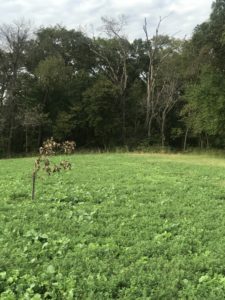
16. Water
If you hunt out west then you already know how attractive water can be when the weather is hot. However, I don’t recommend hunting whitetails during warm weather.
Deer get most of the water and moisture that they need from the foods that they eat. However, they will still drink from a stream, pond, or water hole at all times of the year.
An effective hunting strategy is hanging a tree stand over a water source that is between deer bedding and a food source. When deer have been bedding all day long they will sometimes pass by a nearby water source on their way to dinner in the evening.
17. Scrapes
Scrapes are proven deer attractions that work all year long, not just during the rut. Hang your stand over scrapes or create mock scrapes if you have a killer spot without a scrape. If you notice that the scrape is getting fresh activity then that’s all the proof you need to know that bucks will pass by that spot.
Scrapes are one of the many ways that deer communicate with each other. The licking branch that hangs above the scrape is the key ingredient that every scrape needs if you decide to make your own mock scrape.
Hunting over scrapes during the rut is a popular strategy for getting bucks to naturally walk by and stop in front of your stand for a shot. Check out this article about making a mock scrape with hemp rope.
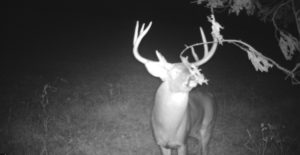
18. Mineral Sites
Where legal, mineral sites can be excellent attractants. However, their attraction decreases when bucks lose their velvet and the fawns are losing their spots.
Hanging your tree stand over a mineral site will be most productive during the early season and will lose its power of attraction quickly as the season progresses. These mineral site location are also going to be a place that deer will associate with human pressure. For this reason, if you are after mature bucks then I would not recommend putting a mineral site where you expect to kill big bucks. Big bucks will likely only visit these mineral sites after dark during the hunting season.
Try using mineral sites for locating bucks with your trail cameras away from known bedding and food sources. Once you get a big bucks picture at night and know he is in the area you can then hunt your preferred stand locations where bucks feel comfortable moving during daylight hours.
19. Bait
Baiting deer and hunting them over the bait has been proven to work well in some circumstances, and completely drive the deer away in others.
Deer will learn your patterns, so if you want to bait and not scare the deer away then you need to feed them consistently and predictably before hunting them over the bait. For example, drive your truck in with the radio up loud so the deer have lots of warning that you are coming in to feed. When you refill the feeder try to do it at noon when deer are typically bedded down in their bedding areas. Be predictable when you come back again to refill the feeder. Do the same thing at the same time of day every time you enter a deer’s habitat to refill the feeder.
Once you have them comfortable with you coming into their area and feeding them you will then need to figure out how you plan to hunt over your bait when the deer are used to you leaving the area after you left the bait out.
One idea is to have someone else drive you into your tree stand. The deer will think you are refilling the bait for them and when your buddy drives away they will believe that you have left. This will make them feel comfortable walking in to feed on your bait since they will believe you have left the area just like you have always done before. Just remember to keep everything the same. Deer will be used to the radio and your smell from putting the bait out. Tell your buddy to stay in the truck and you will refill the bait and then get your weapon and sit in the stand as he drives off.
20. Sanctuaries
Sanctuaries aren’t all created equal. Some hunters believe that a human should never enter designated deer sanctuaries. Other hunters believe that people can enter sanctuaries at specific times for a specific purpose. Examples being shed season, recovering a shot deer, or perhaps a rut hunt.
I suggest that you treat the entire area you hunt like a sanctuary and hunt it strategically!
The key to hunting a sanctuary successfully is based on how well you can access and hunt the area you plan to hang your tree stand. Some stands might only be good for 1 or 2 hunts because the level of intrusion on the deer is going to immediately impact how they feel about their safety in that spot.
Some tree stands can be hunted every day if the access to the stand makes is impractical for deer to hear you, smell you, or see you. Yes, these tree stands exist but almost every one of them takes manual work to get them bullet proof from educating deer of your presence.
21. Hang with the Sun Behind You
Have you driven your car with the sun staring you in the face? It’s hard to focus on your surroundings, as you have to squint your eyes to see what is in front of you. Facing your tree stand away from the sun will make your hunt more enjoyable so you don’t have to squint your eyes the whole time.
If you are able to face your tree away from the sun and still keep your stand between the sun and the area where you expect deer to come from then most likely the deer will be approaching your tree stand with the sun in their face, helping you stay undetected. Just like it’s hard for people to look into the sun and focus on their surroundings, it’s difficult for deer also.
22. Hang Stands Early
Hang stands as early as possible several months before the season. This will allow time for your stand to become free of human scent and any other odors that deer are not accustomed to in that spot. When you let your stands soak in the woods for several months it allows the deer to get comfortable with the stand being there.
Hang your stands in the winter. This is a great time to scout and see the woods without vegetation. You will be able to see all of the deer sign that was left behind over several months of activity. There is also the added perk of avoiding poison ivy and mosquitoes.
23. Hang and Hunt
I prefer to have my stands hanging in the tree several months before season starts. However, if i’m hunting a new property or on public land then sometimes hang and hunt is your best option. If you learn about a particular deer’s movement pattern then you should try to hang and hunt over that movement even if that means you have to move your stand mid-hunt. Learning the most recent information about a deer’s movement-pattern is a great way to kill that deer. However, it typically means you have to be willing to adjust your stand location on the fly.
If you happen to spook a target buck while walking to your spot you can try to hanging your tree stand within shooting range from where you think that buck was bedded before you spooked him. I have heard time and time again bucks circling back and getting killed within a few hours of being spooked. However, I admit that this has never personally happened to me.
24. Hang in the Rain
The rain is a huge advantage in the hunters favor. The noise of the rain hitting the ground covers any noise you might make and the ground is wet which typically means you won’t be crunching leaves as you walk on them.
There is a disadvantage to rain however that might contradict what you have heard. There is a common misconception that rain washes human odor away. However, i’m not so convinced of that because dogs seem to track animals much better in wet conditions. I have also witnessed deer smell my walking trail to the stand even though I walked to my stand while it was raining.
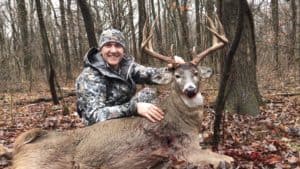
Despite what you may have heard, deer move in the rain. They live outside all year long and a moderate rainstorm isn’t going to keep them from moving. The buck in the picture above was shot during the middle of a rainstorm on a January morning. The odds of me seeing this buck during the daylight probably would not have happened if I wasn’t able to sneak in quietly and close enough to this bucks bedding area.
25. Practice Tree stand Safety
Enough can’t be said about safety. Unfortunately, this comes at a cost that many don’t want to spend money on, but what is your life worth to you?
Safety harnesses, lifelines, and lineman’s belts are something you shouldn’t go without. Just buy them and use them or you are better off hunting from the ground. It’s also a good idea to practice using a lineman’s belt if you’re not used to using one. Using a lineman’s belt makes hanging tree stands easier because you are able to use both hands freely to secure the tree stand into position.
Buy quality tree stands from a reputable manufacturer and inspect everything prior to taking it into the woods.
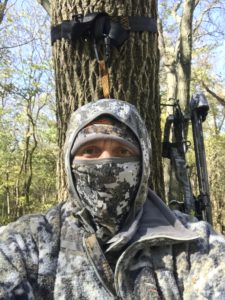
26. Silence Your Tree Stand
Buying a quality tree stand and assembling it correctly will eliminate most of the sound that a stand can make. However some stands still need some help to silence them.
If you use a ladder stand, the clips holding the ladder sections together can make some noise when you climb it. I usually do something to secure the clips to prevent any accidental sound that I could make when climbing up or down. You can use electricians tape, string, or anything else that will prevent the clip from clinking against the ladder.
27. Secure Your Tree Stand
Ratchet straps are a must for making your tree stand secure but if you want to take things to the next level my favorite way to secure a tree stand is to use a chain on the top part of the stand and a ratchet strap on the bottom. The chain provides a long-term option for tree stand safety and you can also use a MaterLock to keep thieves from easily walking off with your stand. Replace your bottom strap every other year or so and readjust it every year to account for tree growth. Make sure to inspect your straps for damage every year.
Mobile hunters don’t really need to worry about their ratchet straps breaking or tearing from being out in the elements longterm. When you take your stand with you after every hunt there is a natural awareness of the condition of the straps since they are being handled for each use.
For mobile hunters I wouldn’t suggest using a chain for a strap because you will absolutely make much more noise then you would with the straps that come with the stand. Mobile hunters should choose the quietest materials available when selecting mobile hunting equipment.
28. Hang Tree Stands Low
That’s right, I said it! Hanging tree stands low is a tip for hanging tree stands. Many hunters will tell you the higher the better, any they wouldn’t necessarily be wrong because your human scent will be higher off the ground. A higher stand could also increase your odds of staying out a deer’s line of sight allowing you to move in the stand undetected. However, the amount of back cover and front cover are very important to stay hidden from deer. If there is more cover at 10 feet than 20 feet then i’m hanging my stand at 10 feet every time if the tree allows for it.
29. Hang Tree Stands High
Hanging tree stands higher can impact how scent flows in the scent stream. However, in most situations hanging a stand ten feet higher will not make a big difference. The specific tree location you choose to hang in will make the biggest impact on whether or not you alert deer while in the stand. If i had to rank an order of importance between a specific tree location, the amount of front and back cover a specific tree offers, and the height of my stand in a tree then I would choose the location first, the amount of front and back cover second, and last would be the height of the stand.
If you don’t have much cover, try picking a tree that forks and hang your stand right below the “V” in the fork. This will help give you multiple angles of back cover to break up your outline. If you have several trees to choose from in a specific location but none of them offer good front or back cover then I would hang my stand as high as I could while taking into account the anticipated shot angles on the deer, topography of the terrain, or obstacles in the path of my shooting lanes like large overhanging limbs too big to easily cut down. Most of the time I never hang higher than 25 feet but that could be different for you based on a specific stand site you are choosing to hang a stand.
30. Protection from Theft
If you are hanging stands and leaving them out for several weeks, months, or years at a time then you probably should lock them up. Unfortunately there are a lot of opportunistic people out there that won’t hesitate stealing your tree stand.
If you use a tree stand with a chain as the top strap then all you have to do is add a lock. Someone would have to go through a lot of trouble to steal your stand at that point. If you don’t have a chain then use a Python Cable or some other bike lock.
31. What Side of the Tree to Climb
Picking a side of the tree to climb up can make or break the success of your hunt. Climbing up a tree requires you to make a lot of movement and you want to hide that movement from the deer as much as you can.
Consider which side of the tree you climb up and down on and where the deer are expected to be when you are climbing up or down. If you are hunting deer in their bedroom then try to keep the tree between you and where deer are expected to be bedded.
If your tree stand is overlooking a food plot then consider climbing up the side of the tree facing away from the food plot. This will help prevent deer from seeing you climb down at dusk while they are feeding in the plot allowing you to sneak away undetected.
32. Visualize Your Shot Opportunities
Before picking a tree to hang your stand in, visualize how you expect deer to be moving within bow or gun range. The perfect looking tree may not be the perfect tree to kill deer or a target buck. Improve your odds by visualizing that broadside and quartering away shot from specific trees.
I don’t like hanging stands directly on top of a trail that I expect deer to be walking on. If a deer walks down a trail that your tree stand is also sitting on, the deer are likely to smell your scent at the base of the tree and your opportunity for good shooting angles on the deer are reduced as opposed to setting up your stand at least ten yards off the trail. I do not want to be shooting straight down on a deer because a broadside shot is more ethical and will increase my odds of killing and recovering that deer. I try to keep a deer trail within 10 – 30 yards from my stand so I can give myself the best chance to take an ethical shot on a deer and also prevent them from smelling my ground scent.
33. Trim Shooting Lanes
It doesn’t matter how good your tree stand location and setup are if you can’t shoot deer from it. Give yourself plenty of shooting lane options by cutting lanes in every direction that you can. You may be hunting over a heavy trail where most of the deer walk, but be prepared for a mature buck to walk behind your stand where you don’t expect them to. Don’t be that person that ends up telling your buddies a story about a monster buck walking within 20 yards of your stand and not even getting a shot opportunity because you had no shooting lanes where they walked by. If you can’t cut trees or limbs then try to find a balance between the perfect tree and the tree that you can take a shot out of. Use your intuition to give yourself the best odds of killing the deer you are after.
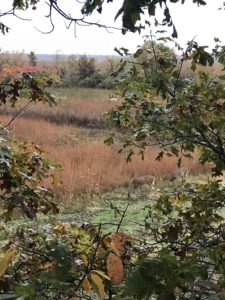
34. Don’t Cut too Much
You don’t need to cut a highway through the woods to have proper shooting lanes. Trim just enough to be able to stop a deer in your shooting lane and take an ethical shot. I really like cutting shooting lanes before spring green-up. If i’m hanging a new stand I will hang the stand and trim the shooting lanes at the same time during the same trip. This helps save time so you aren’t making multiple trips to the stand site and it also cuts down on the amount of human intrusion that you make. If you cut shooting lanes outside of the growing season then keep in mind that you will probably need to cut a little more than you think since those tree limbs will be full of leaves and other growth that takes places over the summer.
Avoid the situation where you didn’t cut enough in attempt to keep yourself well hidden. I saw a hunting video where a one inch tree stood between a hunter and a massive buck from meeting his doom. After the arrow hit the tree and the buck ran away unharmed, the hunter admitted that this one inch tree didn’t seem significant enough to cut down at the time he was clearing shooting lanes. The hunter got down right away and cut it down in anger and disbelief.
35. Make a List of Supplies
Have you ever gone to the woods to hang a tree stand, or several tree stands, and forgot something important? I have! One time I made a three-hour drive to the woods before I realized I forgot something important. That was a hard lesson to learn and now I make a list and check it twice before heading to the woods to hang stands.
Make good use of your time and take everything you might need just in case you need it! (Tree stand, ladder sticks, bow hanger, bow/gun rope, safety line, handsaw, pole saw, chain saw, lock and chain, etc.)
36. Tree stand Accessories
There are a lot of different tree stand accessory products out there. For me, all I need is a cushion to sit on and maybe a bow hanger. I like to keep things simple and even the bow hanger I don’t use that much. I keep my bow on my lap most of the time so I can react quickly to take a shot if a buck happens to be running and I need to stop him quick and make a shot. Also, keeping the bow in my lap means I don’t have to make any movement to grab my bow off the hanger if a deer sneaks up behind me and is suddenly within bow range before I know it.
Use the accessories you need and make decisions to use, or not use, particular products based on how much they will improve your odds of killing deer. If there are products that keep you in the stand longer then use them.
37. Choose the Correct Tree Stand
Aim at having a tree stand that is safe, quiet, and hidden. Sometimes the circumstances of the setup will help determine which kind of tree stand you use. For example, really big trees can make it difficult to hang a hang-on stand in. Also, small trees will make a ladder stand stick out like a sore thumb.
Pick a stand that is comfortable to sit in because if you are comfortable you will likely pay more attention to your surroundings and enjoy your hunt. If you aren’t comfortable then you will be fighting through that misery which probably won’t result in an enjoyable hunt and your odds of getting out of the stand earlier is more likely. If your tree stand is comfortable you will stay in the stand longer, which increases your odds of killing a deer.
38. Ladder Stands
Hanging ladder stands by yourself is difficult and unsafe so take a buddy with you.
If you have several tree size options in a location you want to hunt, choose a large tree to hang your ladder stand in. Larger trees will help break up the outline of the stand. Also, small trees sway in the wind and you don’t want the ladder squeaking as it rocks back and forth against the ground.
Lean the ladder up against the tree and have your buddy hold it in position while you get the brace system or stabilizer bar secured to the tree. This will make the ladder more secure to the tree prior to climbing to the top of the ladder. When you climb to the top, have your buddy continue to stabilize the ladder at the ground and ratchet down the seat at the top of the ladder.
Camouflage the ladder on your stand the best you can by cutting some oak limbs and wire tie them vertically up the sides of the ladder. This will help conceal the stand and help prevent the deer from seeing the ladder and looking straight up at you in the stand. It will also help keep thieves from seeing it. Camouflage spray paint might work well for you also.
Once your ladder stand is hung make sure to test it out and confirm it doesn’t make noise when you climb it. Do whatever you have to do to make it quiet if its making noise.
39. Hang-on Stands
This type of stand offers a lot of versatility because you can hang them in a variety of different trees growing in weird directions. Also, you aren’t limited to the height at which it’s hung, unlike ladder stands. Hang-on stands are also less noticeable than ladder stands, helping to keep the eyes of deer and people off your stand.
Hang-on stands are easier to put up by yourself especially when you factor in having to carry a ladder stand on a long hike. Hang-on stands are much lighter and easier to carry. For ease of carrying through the woods, I recommend using ladder sticks with the hang-ons and bunching them together and strapping them down onto your stand.
One advantage to ladder stands might be the safety while in the stand. Since the ladder is touching the ground it may give a better sense of comfort when it comes to safety. However, if you use a metal chain on the top strap and ratchet strap on the bottom of the hang-on you can’t get much safer than that.
Once you hang your stand, test it out for noise. Stand up and sit down on it. Shift your weight around and step on different parts of the platform. Make sure it doesn’t make any noises and fix the noise if it makes any.
40. Climbing Stands
Climbing tree stands are losing their popularity because of the mobile hang-on tree stand systems on the market but they are another option that many mobile hunters still use.
Climbing stands eliminate the need for a ladder because you can use the stand itself to climb up the tree. One of the bonus features of using this type of stand is that there is no ladder or sticks at eye level on the tree that could potentially draw the attention of deer or people.
There are several disadvantages of climbers to consider which is why I don’t use them. They can be noisy to carry through the woods. Also, a lot of noise is usually made when climbing the tree and scraping up against it on the way up. Lastly, climbing up a wet tree during or after a rainstorm can introduce the risk of slips and falls.
If you use a climbing tree stand make sure you practice climbing with it and get comfortable using it. As always, the use of a safety harness should be used with any tree stand type.
41. Use a Buddy
Whenever it makes sense, a buddy can help save you a lot of time and effort when hanging tree stands. If you can, take a buddy with you that is also a fellow hunter. They will offer another perspective and can notice or suggest things that you might not have thought of yourself.
Once you get your tree stand hung, have your buddy walk and stand where you expect the deer to be and make sure your shooting lanes are clear for anticipated shots on deer.
42. Take Notes
I am constantly trying to make my spots better. During hunting season while i’m hunting in a specific stand, I try to think of little things I can do to tweak my spots and make them better and I will keep notes of these ideas on my iPhone. Once hunting season is over end up with a punch-list of items to complete before next hunting season.
43. Climbing Steps
For your hang-on stand setups use individual climbing steps instead of a ladder that comes in multiple sections and piece together into one long ladder. The metal on metal connections of one long ladder are more difficult to keep silent and they limit you to strapping onto trees with straight trunks. The individual climbing steps that don’t connect to each other and are separate pieces of ladder will provide you with more hanging options and they are quieter to climb since there is no metal-on-metal contact.
44. Hang with a Backward Lean
Hanging a stand in a tree that leans backwards a little bit improves the comfortability of the hunt. This isn’t something I would put high on my priorities when selecting the specific tree stand location but its an added benefit it the option presents itself.
Once I pick the specific tree i’m hanging in I think about my front and back cover first to understand how high my stand will be in the tree. Then I select the side of the tree to climb up on and the specific spot on the tree where the stand will be. I try to find a spot on the tree that has a slight tilt backwards for that recliner feel. You can sit in a tree all day if it feels like a recliner. Some hang-on stands have an adjustment feature to help create this lean affect and still keep the platform level.
45. Use a Lineman’s Belt
Have you ever tried hanging a tree stand with one arm wrapped around the tree and the other arm holding the stand? If this is how you hang tree stands then there is an easier and safer way. Using a lineman’s belt gives you the ability to use both hands without holding onto the tree. All you have to do is let that belt or rope hold your weight and both of your hands will be free to do as you please.
Deer hunting is supposed to be fun, yet every year there are hunters that die or get seriously injured from falling out of tree stands.
Lastly, lineman’s belts are very easy to use and are starting to come as a standard item in the package when you buy a safety harness. Just use it.
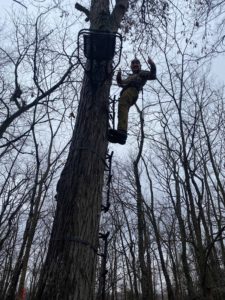
46. Use a Rope to Pull Up the Tree Stand
Carrying a tree stand in one arm and using the other arm to climb up the tree is not the easiest thing to do. Work smarter, not harder. Use a rope to pull the stand up to where you are going to hang it. Some tree stands even have backpack straps which is probably the easiest and safest way to getting a stand up in a tree.
47. Tree Stand Hanging Device
Some manufactures are selling brackets that you can easily mount onto the tree and then all you have to do is slide or mount the tree stand on the bracket. Tree-stands can be heavy and awkward to hang in trees. You have to throw the straps around the tree, hold on to the stand, and tie down the strap all at the same time. The bracket make’s this process a lot easier.
If you like this bracket idea but aren’t using a stand that comes with a bracket, try using a screw step to hold the weight of the stand so you can use both hands to wrap the straps around the tree.
48. Bow Hoist Ropes
Add a bow hoist rope to each of your tree stands so you don’t have to climb the tree with a bow or gun in your hand. Use a good synthetic rope that won’t deteriorate over time from the weather. Depending on the rope you use, you may have to change these ropes out every other year or so.
One morning I went hunting with a buddy that was pulling his bow up to himself in the stand and It fell and hit the ground. The rope he was using to pull his bow up broke while the bow was suspended about fifteen feet off the ground. We both knew the morning hunt was over. How was he going to take an ethical shot on a deer without having the confidence that his sight didn’t get bumped out of tune? The bow hitting the ground most likely alerted deer in the area and we both thought the sight was probably compromised. We decided to abandon the hunt right away.
49. Hang within Bow Range of Deer Trails
This one might sound a little obvious, but position yourself to take ethical shots on deer. I practice shooting my bow out to 70 yards but I would never have confidence in taking a shot that long on a wild animal that can react quickly to a shot.
It can be temping to hang in a tree that has good cover, or because its large and leans backwards a little bit, but it’s more important get yourself within an ethical range to take a lethal shot on a deer.
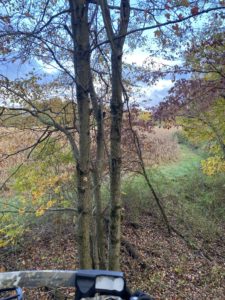
50. Mark Shooting Distances
If you don’t have a range finder, or something to tell you the distance of specific shots, then you might have to pace off your shot distances from your tree stand. Use key features like a tree, rock, or clump of grass to help you remember how far specific spot are. Memorize these distances in your head.
If you find yourself guessing at shooting distances most of the time then invest in a range finder because it will help increase your odds of success at killing deer. When purchasing a range finder make sure you buy one that calculates different elevations and shot angles. Most range finders come with angle compensation but just make sure the range find you buy has that capability. There are also some bow sights with range finders built into them that can help you out. A range finder is a tool I highly recommend and personally would never go without.
51. Make Adjustments
As you build up history with a specific stand location, takes notes of the way deer use that area. You may need to move your stand as little as 10 yards to a different tree or perhaps hang it higher or lower. Learn from every hunt and take notes so you know how to make that spot better.
Don’t be afraid to make adjustments! I can’t stress that enough. If you see deer moving through an area a specific way, the odds are good that they will keep doing the same exact thing. Make adjustments to put yourself in the best position.
52. Inspect Your Tree Stand
Make sure you assemble stands according to the manufacturer’s directions. Inspect any previously used stands prior to using them.
Take care of your stands by doing yearly inspections. A good time to inspect your stands is when you trim shooting lanes. Inspect the integrity of any cables and straps and replace them if any defects are found. Lastly, make sure you don’t have poison ivy climbing up the tree. I learned that one the hard way!
